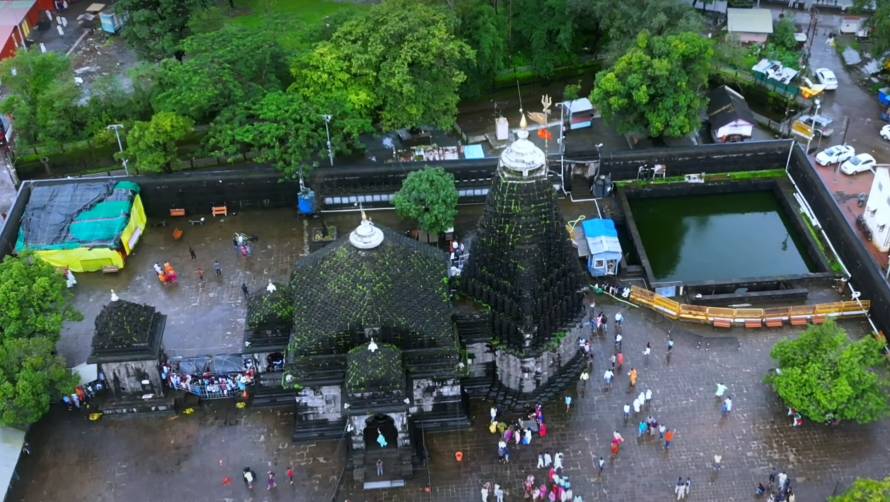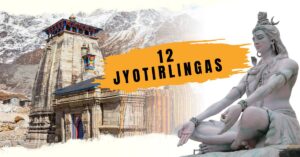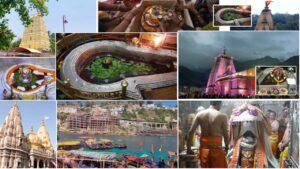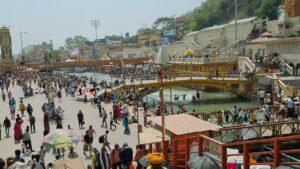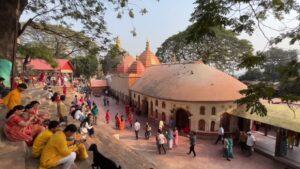Trimbakeshwar Temple holds a profound place in India’s spiritual heritage, nestled amidst the picturesque landscapes of Maharashtra. This ancient shrine, dedicated to Lord Shiva, stands as a testament to devotion, architectural grandeur, and historical significance.
We invite you to embark on a journey to Trimbakeshwar Temple, exploring the ideal time for a visit, nearby attractions, the temple’s enchanting features, the vibrant festivals that come alive within its precincts, and practical tips to enhance your experience.
You May Like
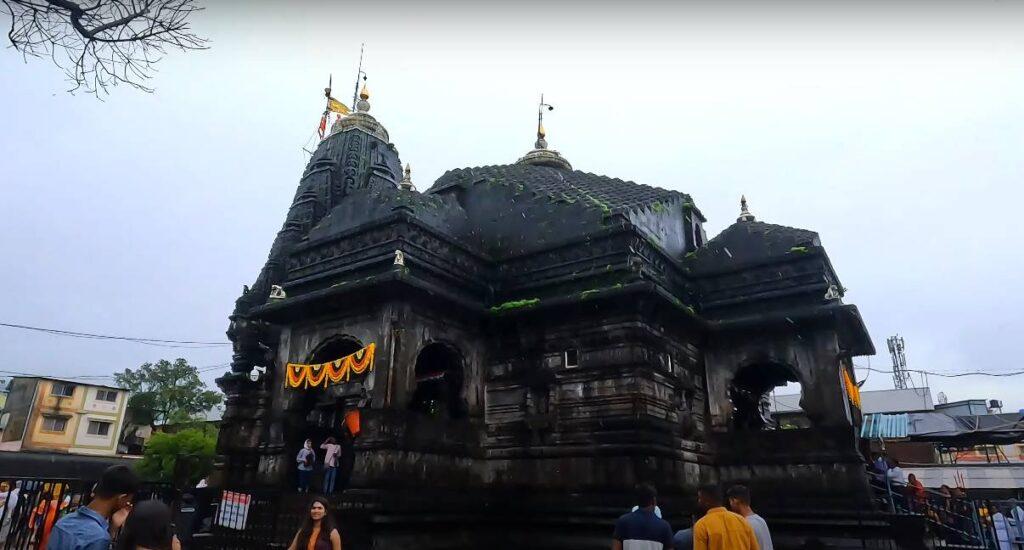
Best Time to Visit
Trimbakeshwar Temple welcomes visitors throughout the year, each season bestowing its charm upon the pilgrimage.
- For those seeking an optimal blend of comfortable weather and spiritual fervor, the months spanning from October to March are recommended. During this period, the climate remains pleasantly cool, ensuring an enjoyable exploration of the temple and its surroundings.
- For those keen on immersing themselves in the temple’s festivities, planning your trip around the Mahashivratri festival, typically falling in February or March, guarantees an opportunity to witness the temple adorned in its festive glory.
How to Visit Trimbakeshwar Temple
- By Air: The nearest airport to Trimbakeshwar is the Ozar Airport, which is approximately 35 kilometers away. From the airport, you can hire a taxi or take a local bus to reach Trimbakeshwar.
- By Road: Trimbakeshwar is well-connected by road to major cities like Nashik (approximately 30 kilometers), Mumbai (approximately 180 kilometers), and Pune (approximately 215 kilometers). You can hire a taxi, use a private vehicle, or take a state-run bus to reach the temple.
- By Train: The nearest railway station to Trimbakeshwar is Nashik Road Railway Station, which connects to various cities across India. From Nashik, you can hire a taxi or take a bus to reach Trimbakeshwar.
Temple Attractions
Entering Trimbakeshwar Temple is like stepping into a story of spirituality, impressive architecture, and meaning. The temple’s attractions have something special for everyone, whether you’re a devoted visitor or just curious. Each part adds to the experience in its way.
- The Three-Faced Lingam: At the heart of Trimbakeshwar Temple lies an awe-inspiring marvel – the three-faced lingam. This unique representation of Lord Shiva captures the cosmic trinity of Brahma, Vishnu, and Shiva in a single embodiment.
- Nandi Statue: Guarding the entrance with unwavering devotion is the majestic Nandi, Lord Shiva’s divine vehicle and an emblem of faithful service. The Nandi statue serves as a reminder of the devotee’s role in the spiritual journey, symbolizing the purity of intention and the humility required to approach the divine.
- Kushavarta Kund: Devotees believe that by taking a dip in this holy reservoir, they cleanse themselves of sins and purify their souls. The tranquility of the Kund, coupled with its spiritual resonance, offers a serene space for self-reflection and rejuvenation.
- Gangadwar Bathing Spot: Another integral part of the temple complex is the Gangadwar, where the holy river Ganga emerges from the earth. This spot further amplifies the temple’s spiritual aura, inviting pilgrims to engage in rituals and offer their prayers to the divine source.
Nearby Places to Explore
While Trimbakeshwar Temple is captivating, the area around it offers enchanting destinations. Exploring these nearby places adds depth to your journey, revealing natural beauty, cultural heritage, and diverse experiences in Maharashtra.
- Brahmagiri Hills: A short distance from Trimbakeshwar, the Brahmagiri Hills stands as a natural masterpiece, commanding attention with their serene beauty. As you ascend these hills, a panoramic vista of the Western Ghats unfolds, painting a picturesque landscape that encapsulates the region’s breathtaking allure.
- Anjaneri Hills: Steeped in mythology and spirituality, the Anjaneri Hills offer an opportunity for both adventure and introspection. Believed to be the birthplace of Lord Hanuman, these hills adorn with ancient temples and rock formations that tell tales of devotion.
- Nashik: Just a short drive away lies the vibrant city of Nashik, a cultural treasure trove that holds a unique place in India’s history. Immerse yourself in the bustling markets, relish the local cuisine, and explore the town’s rich past, including its association with the Kumbh Mela, one of the world’s largest religious gatherings.
Festivals and Celebrations
The temple comes alive throughout the year with festivals and celebrations. They infuse its sacred precincts with an atmosphere of joy, devotion, and cultural richness.
Mahashivratri Festival:
- A pinnacle of devotion, Mahashivratri marks the celebration of Lord Shiva’s cosmic dance and the marriage of Shiva and Parvati.
- The temple adorns elaborate decorations, and a grand procession of the deity takes place amidst the chanting of hymns and the rhythmic beats of drums.
- Devotees fast, engage in meditation, and participate in night-long vigils, expressing their reverence for Lord Shiva.
Rudrabhishek Ceremony:
- An integral part of the temple’s rituals, the Rudrabhishek is a ceremonial offering of sacred items to Lord Shiva.
- Vedic chants and mantras are recited during the ceremony, invoking blessings for devotees’ well-being, prosperity, and spiritual growth.
- The ambiance during the Rudrabhishek is charged with spiritual energy, creating an immersive experience of divine presence.
Ganesh Chaturthi:
- Celebrating the birth of Lord Ganesha, Ganesh Chaturthi is marked by the installation of Ganesh idols in homes and temples.
- The temple witnesses special prayers and offerings to Lord Ganesha, followed by processions and cultural programs.
- The festive spirit radiates through the temple, fostering a sense of unity and joy among devotees.
Krishna Janmashtami:
- The birth anniversary of Lord Krishna is commemorated with enthusiasm and devotion.
- The temple hosts special ceremonies, including the recitation of Krishna’s life stories and the decoration of the deity’s idol.
- The celebration is a testament to the temple’s dedication to various deities and the diversity of devotion it encompasses.
Tips for a Memorable Visit
To ensure a fulfilling and respectful visit to Trimbakeshwar Temple, consider the following tips:
- Dress Modestly: As a mark of respect, dress modestly, covering your shoulders and legs.
- Footwear Protocol: Before entering the temple premises, remove your footwear, a customary gesture of reverence.
- Photography Etiquette: Seek permission before capturing photographs, especially of the deity or sacred rituals.
- Timings and Planning: Familiarize yourself with the temple’s opening and closing timings to make the most of your visit.
- Respect Local Customs: Adhere to local customs and the temple’s guidelines to maintain the sanctity of the space.
Trimbakeshwar Temple stands as an epitome of spirituality, architecture, and cultural heritage. Beyond the temple’s sacred walls lies a world of exploration, spirituality, and cultural immersion. The journey to Trimbakeshwar is an invitation to unravel the mysteries of ancient devotion. You can witness the interplay of tradition and modernity, and bask in the divine embrace of Lord Shiva.
Whether you’re seeking solace, cultural enrichment, or a rendezvous with history, Trimbakeshwar Temple promises an experience that resonates deep within your soul, leaving an indelible mark of reverence and wonder.
Continue to Explore: Kailasa Temple: Mystery, How to Visit, and Best Time to Visit!
